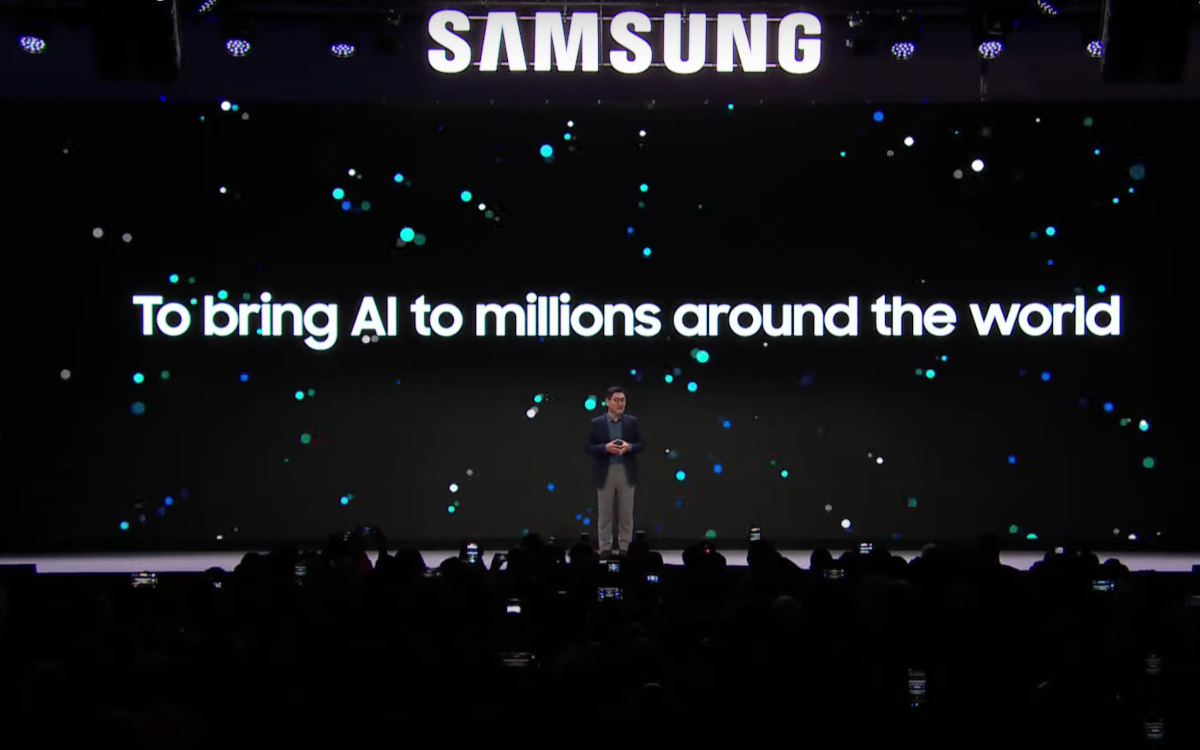Samsung's visual display business is benefiting from major sporting events this summer, but intense competition with Chinese suppliers and low demand for professional display solutions are impacting their balance sheet. To stand out, they are focussing on AI, IT security, design, services, and IoT.

Displays: Samsung Builds on AI, Service, and Design
Samsung has recorded its highest quarterly profit since the third quarter of 2022, thanks to the AI boom. Operating profit rose more than 15 times compared to the same period last year, reaching 6.9 billion euros. The chip division is once again the company’s main profit generator. Even though this highly volatile business is making Samsung’s coffers brim over, the outlook is less favorable for the digital signage-relevant Visual Display and Digital Appliances business unit.
AI, IT security, IoT, design, and services
Overall demand in the TV market increased year-on-year, mainly due to global sporting events. Samsung is increasingly focusing on premium products such as Neo QLED, OLED and lifestyle displays. However, profitability fell year-on-year as costs rose due to higher panel prices and increased market competition.
For the digital signage industry, the most interesting information are clues about future strategy. Samsung wants to strengthen its market position in the display market with new functions relating to AI, IT security, design, IoT, user experience, and strengthening of the service business.
For digital signage, the focus could bring the following:
AI
- Additional AI functions for more intelligent digital signage solutions. This is where Samsung can benefit most from the consumer division.
- In addition to improved upscaling of the image signal, the focus should be more on sensors and lower power consumption.
Cyber Security
- Whether Tizen, VXT and the integration of sensors via Smartthings Pro, IT security is becoming a major differentiator in the highly competitive professional display market.
- Samsung benefits from being able to offer not only displays but also operating systems, software, IoT ecosystems and even software from a single source.
Design
- Displays are getting thinner and the bezels are getting narrower. There is hardly any room left for the logos that were previously common.
- Samsung regularly surprises with innovative design and new form factors for consumer TVs. The digital signage industry could also benefit from more bold design
User experience and IoT
- Samsung is building on a differentiated user experience with Samsung Smartthings for TVs, for digital signage the integration of Smartthings Pro is the real game changer.
- Samsung professional displays act as a sensor hub and enable the easy connection of thousands of different sensors. A possible revolution for digital signage integrators who now also have to adapt to wireless
Services
- First and foremost, of course, VXT must be mentioned here, the global sales platform and a CMS offering (as the successor to Magicinfo)
- But improved global services would also be necessary, as Samsung has so far been too focused on individual national companies
Most of the functions mentioned above could also be integrated for the LED products related to The Wall. Digital signage will be excited to see how quickly new functions will be added to the product portfolio. What is certain is that Samsung will introduce more innovations around the hardware (e.g. software & services) in the future in order to position itself in the intense competition in the display market.
